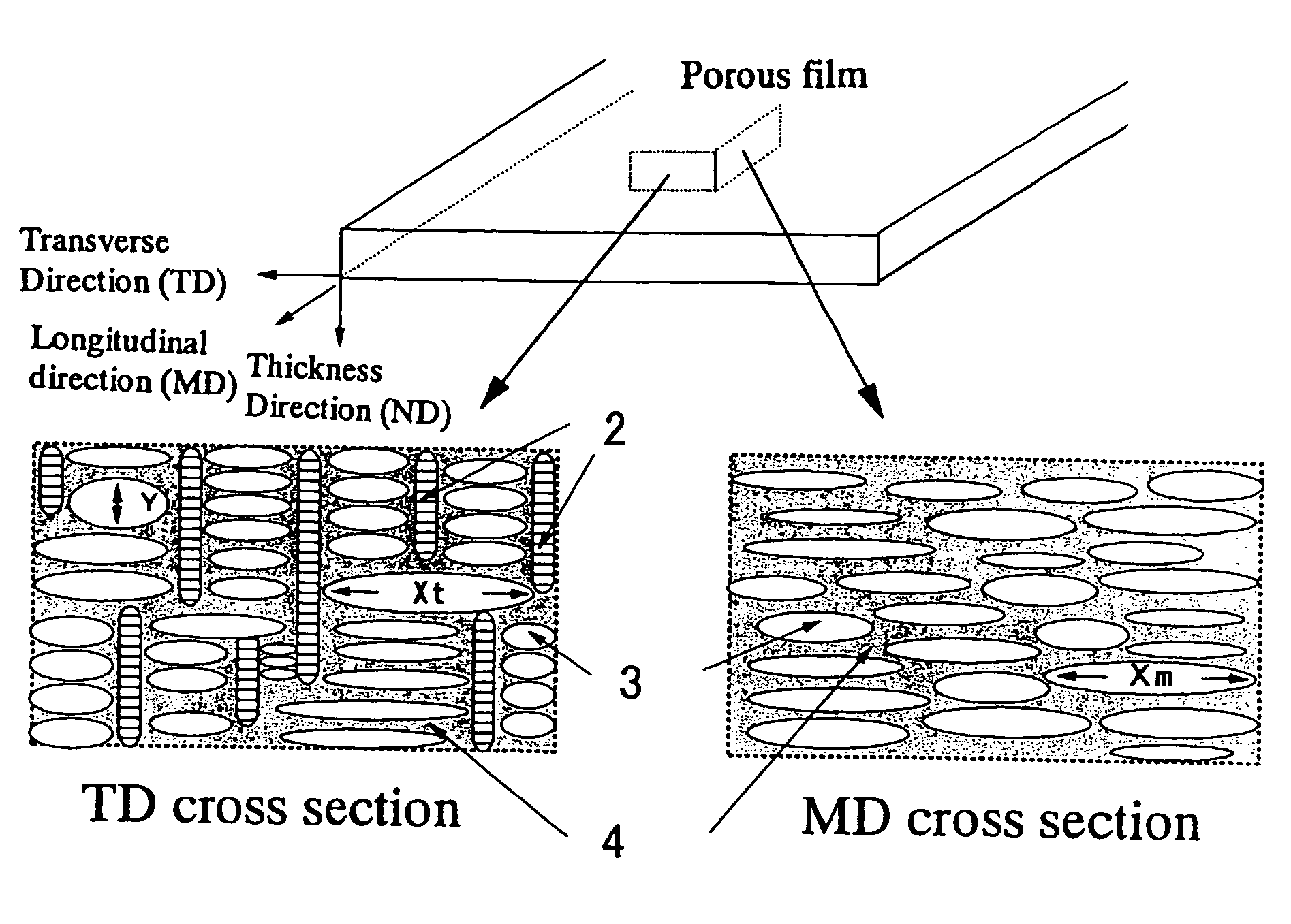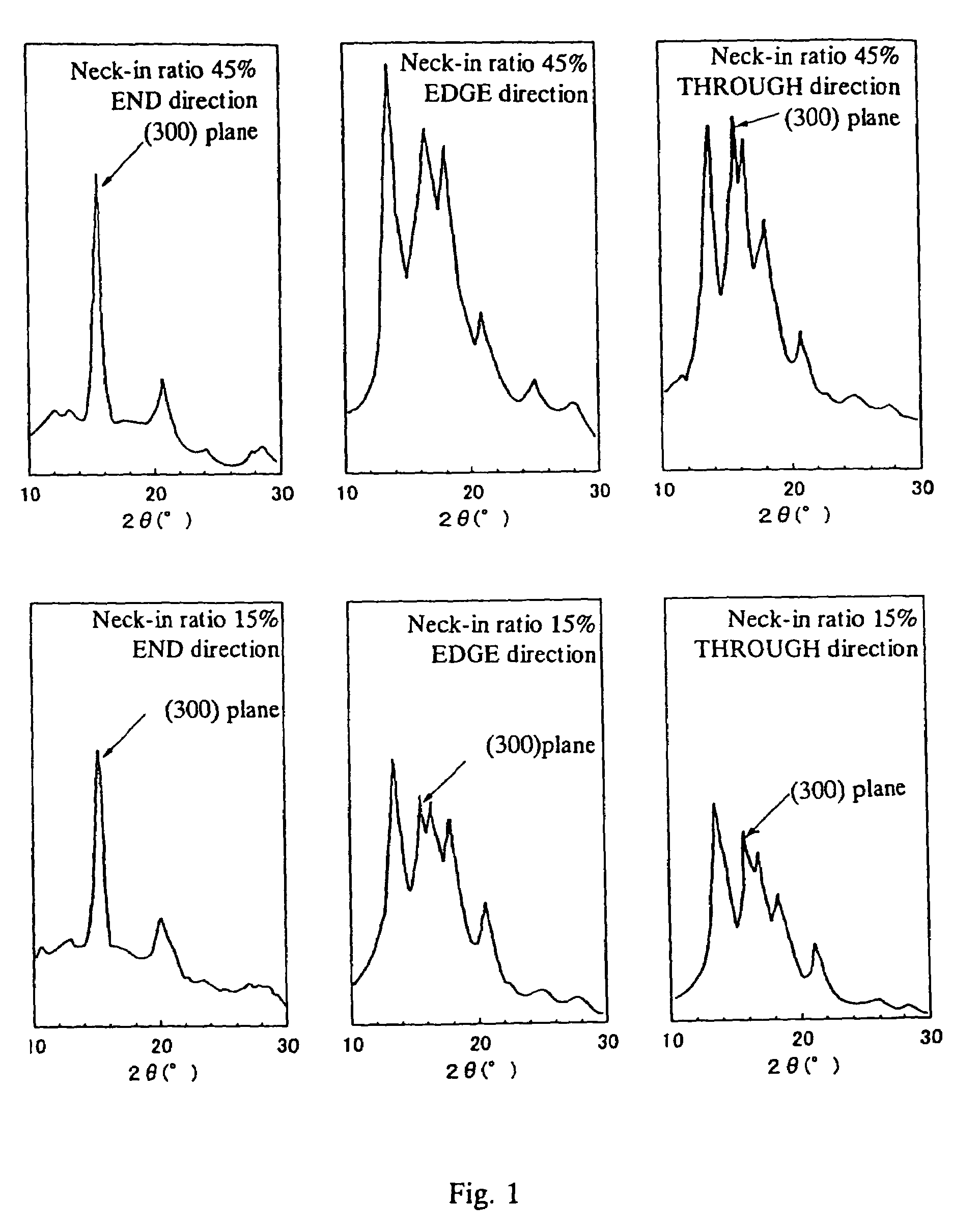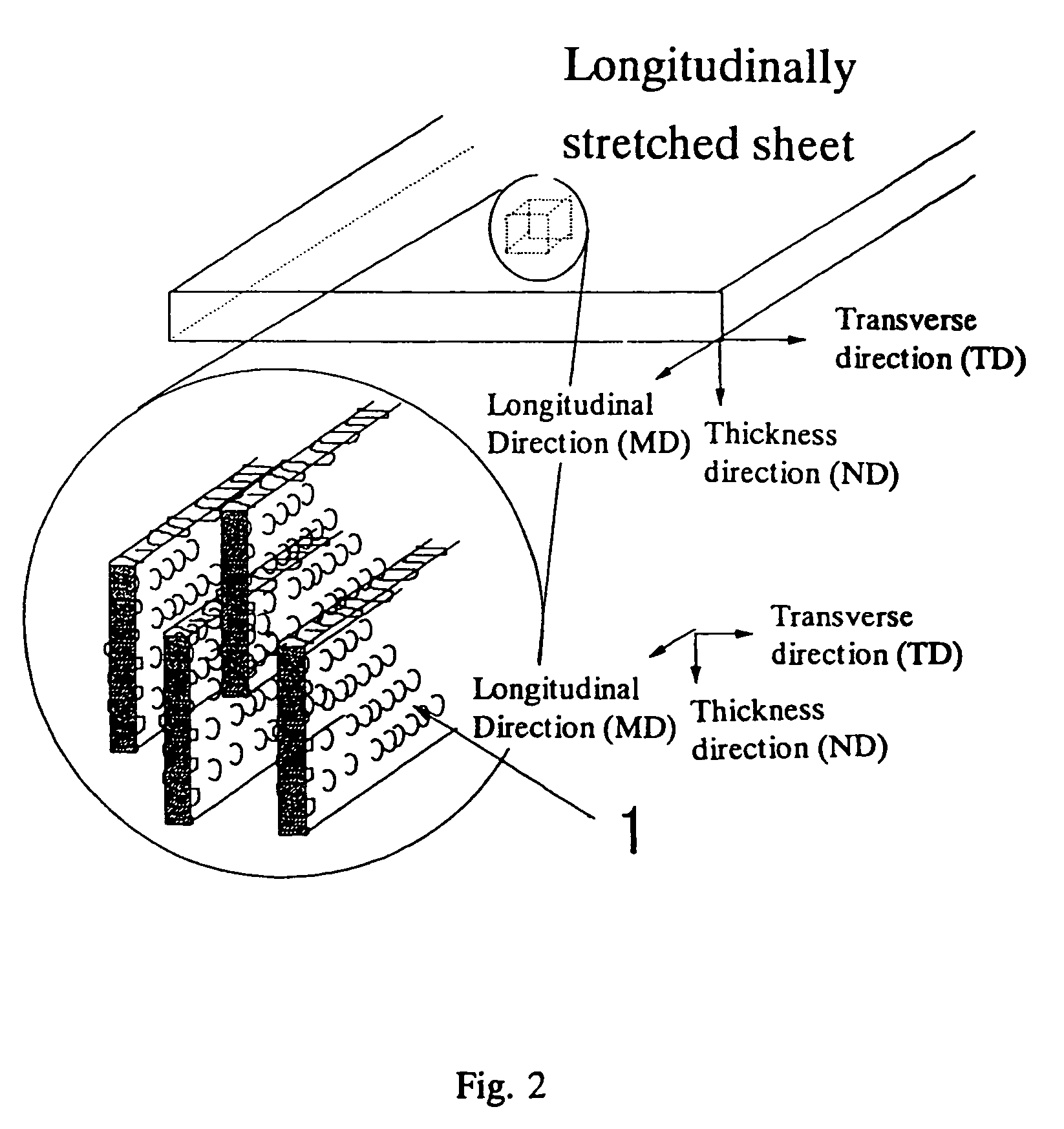Successively biaxial-oriented porous polypropylene film and process for production thereof
a technology of porous polypropylene and biaxial orientation, which is applied in the direction of cell components, cell component details, transportation and packaging, etc., to achieve the effects of good feeling, high air permeability and porosity, and electrical resistan
- Summary
- Abstract
- Description
- Claims
- Application Information
AI Technical Summary
Benefits of technology
Problems solved by technology
Method used
Image
Examples
examples
[0229]Examples and comparative examples will now be given to describe the present invention in more detail. The temperature at which the amide compound dissolved in the polypropylene-based resin melt, the K value of the unstretched web sheet, the β-crystal content, the degree of β-crystal orientation of the longitudinally stretched sheet, how many times breakage occurred during transverse stretching, and the porosity, average pore size, maximum pore size, Gurley air-permeability, estimated electrical resistance, water vapor permeability, leakage resistance, tensile strength, hand (feeling), and thickness uniformity of the porous film were determined by the methods given below.
Dissolution Temperature
[0230]In Examples and Comparative Examples, the temperature at which the crystals of amide compound dissolved in the polypropylene-based resin melt was determined by observing resin pellets to be extruded from a T-die, at a heating rate of 10° C. / minute using an optical microscope equippe...
example a
[Method (I)]
[0271]N,N′-Dicyclohexyl-2,6-naphthalenedicarboxamide (0.05 weight part, used as a β-crystal nucleating agent) and 0.05 weight part of Irgafos 168 and 0.05 weight part of Irganox 1010 made by Ciba Specialty Chemicals (used as antioxidants) were mixed in a Henschel mixer with 100 weight parts of a propylene-ethylene block copolymer with an MFR of 2.7 g / 10 minutes and an ethylene content of 6.2 wt %. This mixture was melt mixed at 250° C. in a single screw extruder, and the extruded resin was cooled and cut to prepare resin pellets containing the β-crystal nucleating agent. It was confirmed visually that the molten resin discharged from the die nozzle of the single screw extruder was transparent, indicating that the above-mentioned amide compound had completely dissolved in the molten polypropylene during the melt mixing.
[0272]These resin pellets were then extruded in the form of a sheet at a resin temperature of 200° C. using a T-die extruder (twin screw extruder with a sc...
example b
[Method (I)+Method (II)]
[0277]A stretched film was obtained in the same manner as in Example A with the exception of changing the distance between the longitudinal stretching rolls to 180 mm so as to adjust the neck-in ratio to 35%. Table 1 gives the various conditions and properties.
PUM
| Property | Measurement | Unit |
|---|---|---|
| pore size | aaaaa | aaaaa |
| pore size | aaaaa | aaaaa |
| thickness | aaaaa | aaaaa |
Abstract
Description
Claims
Application Information
 Login to View More
Login to View More - R&D
- Intellectual Property
- Life Sciences
- Materials
- Tech Scout
- Unparalleled Data Quality
- Higher Quality Content
- 60% Fewer Hallucinations
Browse by: Latest US Patents, China's latest patents, Technical Efficacy Thesaurus, Application Domain, Technology Topic, Popular Technical Reports.
© 2025 PatSnap. All rights reserved.Legal|Privacy policy|Modern Slavery Act Transparency Statement|Sitemap|About US| Contact US: help@patsnap.com



